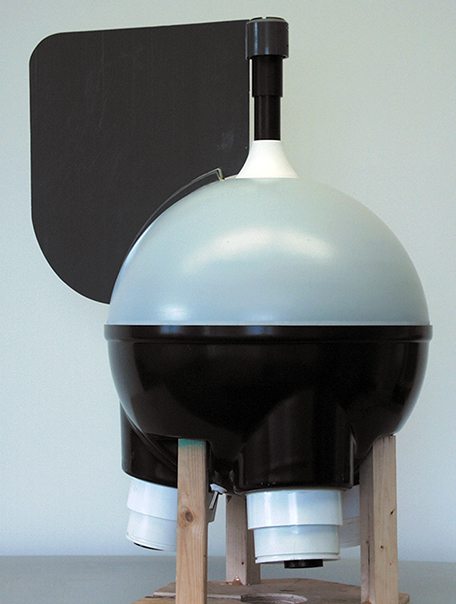Ocean Drifters Get the Facts
Through Small Business Innovation Research (SBIR) funding from NASA's Goddard Space Flight Center, of Greenbelt, Maryland, a new kind of vessel has taken to the seas. Clearwater Instrumentation, of Watertown, Massachusetts, created a multi-sensor array ocean drifting station. Well-known for its complete line of drifters, the newest member of the Clearwater family is the ClearSat-Autonomous Drifting Ocean Station (ADOS).
ADOS was developed to support observations of Earth by NASA satellites. It is a low-cost device for gathering an assortment of data necessary to the integration of present and future satellite measurements of biological and physical processes. Clearwater Instrumentation developed its ADOS technology based on Goddard's Sea-viewing Wide Field-of-view Sensor (SeaWiFS) project, but on a scale that is practical for commercial use.
Drifters are data collection instruments that are comprised of a surface float tethered to a drogue, but the ClearSat-ADOS is not your ordinary drifter. It is used for the in situ measuring of ocean surface layer properties such as ocean color, surface thermal structure, and surface winds. Changes in ocean color can signify the presence of various amounts of marine phytoplankton.
ADOS uses sensors that observe the color of seawater by measuring solar irradiance and the strength of upwelling light at specific SeaWiFS frequencies. Each sensor is encased in waterproof housing to eliminate biofouling, which is the effect ocean water and phytoplankton have on the sensor. The caps on the housing are removed at predetermined intervals to permit the activation of a second, unfouled sensor, allowing for the evaluation of the effects biofouling had on the first sensor and the deployment of a new upwelling light sensor array. A third sensor performs the same function at a later point in the life of the drifter.
ADOS also measures the seawater temperature profile at 13 depths from sea surface to 120 meters utilizing 12 SmartSensors. Using the WOTAN (weather observations through ambient noise) technique, ADOS is able to measure the wind, while wind direction is determined with an electronic compass. All of the information about ocean color, wind, and temperature is collected via the Argos satellite, which locates ADOS by measuring the Doppler shift of the transmitter.
Thus far, multiple ADOS units have been sold to The Scripps Institution of Oceanography, where they are being applied in the field of academic science research. Fisheries can also benefit, because ADOS can locate prime cultivation conditions for this fast-growing industry. Clearwater Instrumentation expects continued success with the product as more and more uses are found in the commercial market.

ADOS is used for the in situ measuring of ocean surface layer properties such as surface winds, surface thermal structure, and ocean color. The information gathered by ADOS is then collected via satellite.













